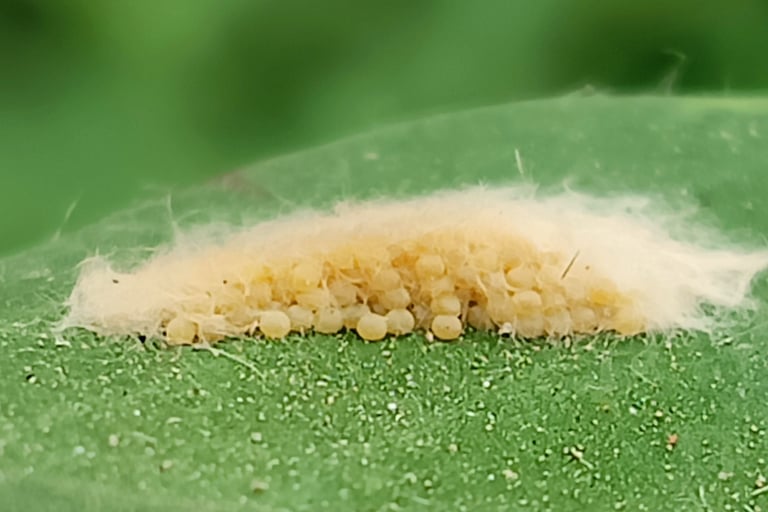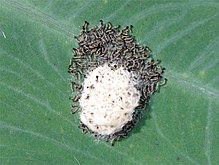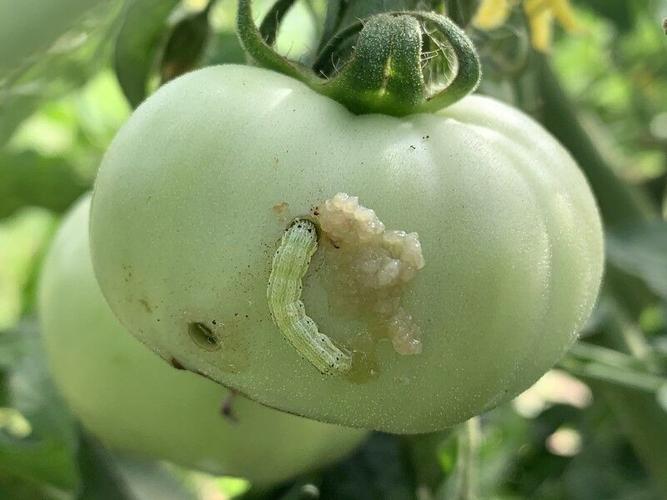Tobacco caterpillar, Spodoptera litura (Fabricius) (Lepidoptera: Noctuidae)
The tobacco cutworm, Spodoptera litura (Fabr.) (Lepidoptera: Noctuidae), is global agricultural pest. It is highly polyphagous, able to feed on many families of plants, including important crops such as cotton, beans, tobacco, vegetables, and rice (Dhir et al., 1992; Qin et al., 2004; Zhou, 2009; Ahmad et al., 2013).
Tobacco caterpillar, Spodoptera litura Fabricius (Lepidoptera: Noctuidae), otherwise known as the tobacco cutworm or cotton leafworm, is a nocturnal moth in the family Noctuidae. S. litura is a serious polyphagous pest in Asia, Oceania, and the Indian subcontinent that was first described by Johan Christian Fabricius in 1775. Its common names reference two of the most frequent host plants of the moth. In total, 87 species of host plants that are infested by S. litura are of economic importance. It is an important polyphagous insect pest that causes widespread economic damage to vegetables and other crops, such as soybean, tomato, sweet potato, groundnut and cotton. S. litura parasitize the plants through the larvae vigorous eating patterns, oftentimes leaving the leaves completely destroyed. The moth's effects are quite disastrous, destroying economically important agricultural crops and decreasing yield in some plants completely. Their potential impact on the many different cultivated crops, and subsequently the local agricultural economy, has led to serious efforts to control the pests.
S. litura, widely distributed throughout tropical and temperate Asia, Australasia and the Pacific Islands (Feakin, 1973; Kranz et al., 1977).
Life Cycle
Although the length of a life cycle varies slightly throughout the different regions, a typical S. litura will complete 12 generations every year. Each generation lasts about a month, but temperature causes slight variations: life cycles in the winter tend to be slightly more than one month, and life cycles in the summer tend to be less than a full month.
Resistance to Synthetic Insecticide
Over many years, the control of S. litura has traditionally relied on sprays of various insecticides. Many field populations of S. litura have developed high resistance to multiple insecticides, including organophosphate, carbamate, pyrethroids and some newer chemistry insecticides such as indoxacarb, abamectin, emamectin benzoate and chlorantraniliprole. The effort to control this pest is becoming exceedingly challenging all over the world. (Li Shi, Yao Shi, Ya Zhang and Xiaolan Liao, Nature- 2019)
Novel IPM Control Program
Looking at insecticide resistance status and the failure of multiple synthetic insecticide molecules to control the population of Spodoptera litura, a sustainable containment strategy based on integrated pest management is recommended.
Our innovative, AI-Enabled crop protection device BraveHawk® Monza is perfect alternative to the synthetic insecticides. During our open field trials in tomato and maize crop; our BraveHawk® Monza achieved excellent control on S. litura. Deployment of this device in fields reduced the population of S. litura well below economic threshold level (ETL) and kept yield losses well below 3%.















